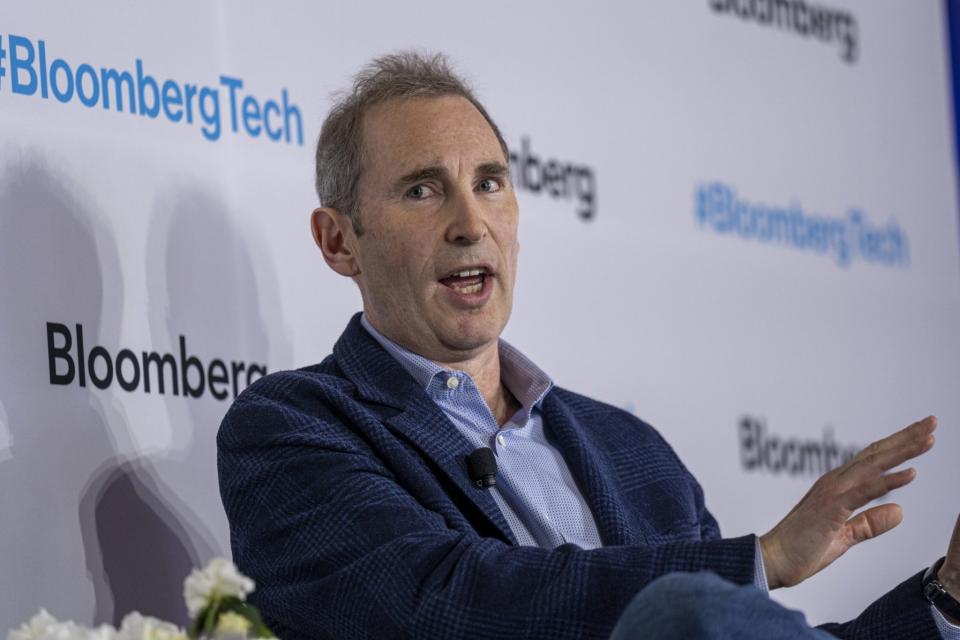Amazon’s $20 billion NBA deal isn’t riskless. But it’s close

The NBA is close to announcing its long-rumored TV rights deal with ESPN, NBC, and Amazon, The Athletic reported on Tuesday. The deal is expected to net the league $76 billion over 11 years, with the TV networks and online giant divvying up regular season and playoff games. There’s an outside chance that TNT, an incumbent, could still push Amazon aside in the deal, the publication reported but, as currently constructed, Amazon is expected to be the NBA's new partner.
For the tech giant, the deal helps fill a hole in its already-giant advertising business, while serving as a nice addition for Prime members who are sports fans but who might occasionally dabble with the thought of dropping the service. The risks on the other hand, whether monetary or related to internal politics, appear relatively minimal for a company valued at $2 trillion. If you’re Amazon CEO Andy Jassy, you probably do this deal 10 times out of 10, even at the steep cost of a reported $1.8 billion a year.
Does it matter that Jassy is a huge sports fan? It probably didn’t hurt for those Prime Video leaders at the company who were pushing for the deal. But that’s not why a deal like this gets done. The tech giant’s advertising division is on pace for $50 billion in revenue this year but has largely reached those heights on the back of product ads – the product search results carrying “sponsored” labels that have in recent years began dominating much of the shopping site for better or worse. Along with its Amazon’s Thursday Night NFL games, the new NBA package (which would begin with the 2025-2026 NBA season) will help attract different big-brand advertisers to Amazon that typically wouldn’t advertise with the online retailer because their product or service aren’t widely sold on the platform. Think Anheuser-Busch for example.
Live sporting events also serve as one of the last areas of appointment viewing, which drives big advertising spending. In addition to some Friday and Saturday regular season games, Amazon is also expected to air the NBA’s new in-season tournament, which was a hit in its inaugural season last year, as well as some conference final playoff games and the so-called play-in games, which decide the last few teams that make the playoffs.
But the deal might be just as much about giving Prime customers another reason to stick around and not consider ditching the $139-a-year membership. According to a recent survey conducted by the equity research firm Evercore ISI, 90 million American households already have a Prime membership. In short, Prime has saturated much of the US market. Could the NBA package bring in some new Prime members, whether just for Prime Video or the broader service? Sure. But that likely isn’t the overwhelming expectation internally.
Instead, this is about getting Prime members to spend more time in the company’s ecosystem because when that happens, they spend more money on Amazon. Another related reason: to give Prime members another reason not to think about dropping their membership. While the same Evercore survey found Amazon is still the online retailer that the greatest percentage of respondents believe has the best prices, selection and convenience, all three percentages were down between 4 and 10 percentage points from last year. Membership offerings from competitors like Walmart and new low-price competitors like Temu have caught the attention of US consumers, including Prime members.
In other words, to use a sports metaphor, this deal is more about playing defense with Prime membership numbers, not offense.
As a bonus, NBA games provide another big audience for Amazon to cross-promote Prime Video’s original shows like Fallout or Reacher. You also can’t count out merchandise tie-ins or new ways that the NBA might work with Amazon Web Services either.
Are there risks? Sure.
For starters, it’s no sure thing that the increased advertising in the games will make up for the $1.8 billion annual outlay for the rights (and that’s not including production costs or the big-money contracts Amazon will offer top announcing talent to call the games). Amazon, however, also cares about the DWI , or down-stream impact, of increasing engagement with Prime members, who historically spend more on shopping the more they watch Prime Video.
The other thing to watch out for internally: If and how the multi-billion deal impacts the budget and ambitions of the company’s studios business. Even at its $2 trillion market cap, Amazon divisions of course sets budgets and it’s fair to wonder how nearly $2 billion earmarked for one part of the Prime Video business impacts investment allocations for the studio side of Prime Video.
Even so, the upsides are too great to outweigh these risks. You might even call this deal a slam dunk.
This story was originally featured on Fortune.com

 Yahoo Finance
Yahoo Finance 